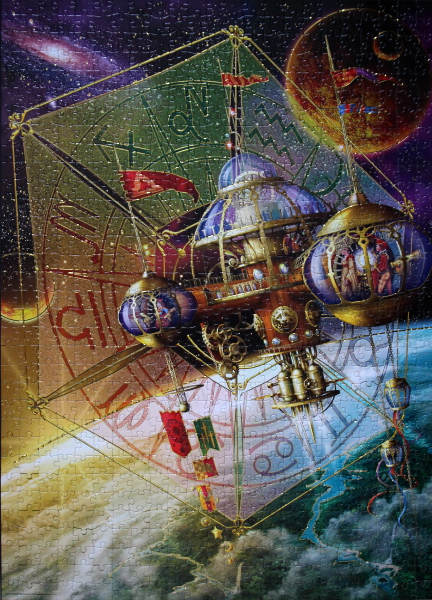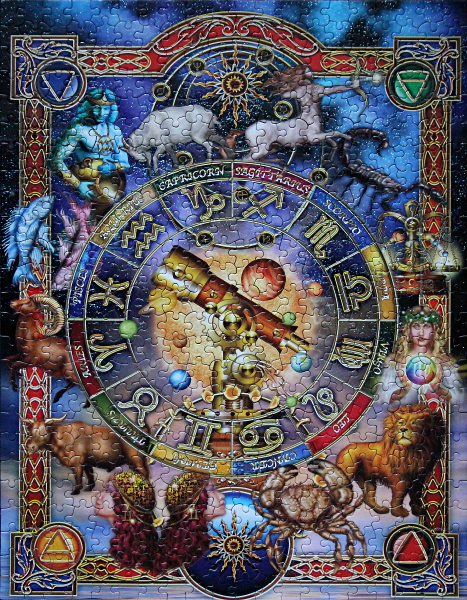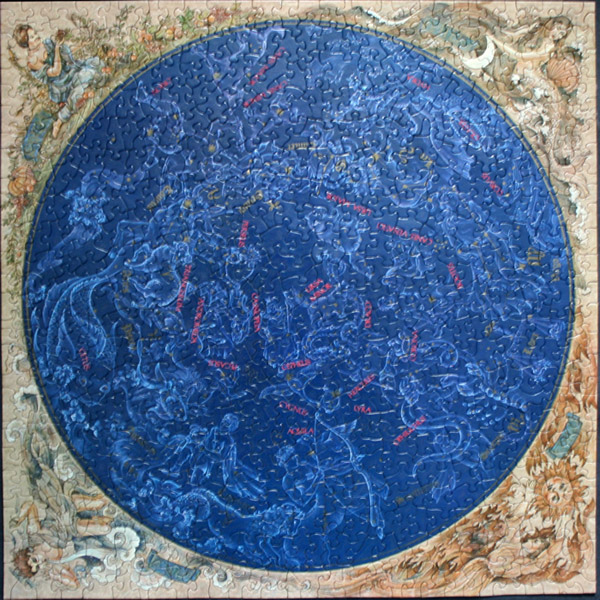Size: 750 pieces
Dimensions: 67.95 cm x 48.1 cm
Producer: Mega Puzzles, Vibrant series, 2013, No. 50572ADN, A 23123 LP
Artist: Ciro Marchetti
Original: Space Station
Puzzle: Lovely vibrant puzzle – a pleasure to do. Easy due to multiple cues – bright colours with distinct borders, multiple distinct colour regions, zodiac signs in a circle, different textures of wood and metal, bright red flags. The pieces are large. I would suggest starting from the flags since they are very distinct. The other good regions are the galaxy in the top left, the planet in the top right, the yellow of the sunlight in the bottom left, and the green and blue landscape in the bottom right. The metal parts of the capsules and the wood of the core of the station can come next, followed by the zodiac sign circle. The rest of the puzzle pieces should be trivial. Great puzzle for relaxation, goes wonderfully with a fantasy audiobook.
































